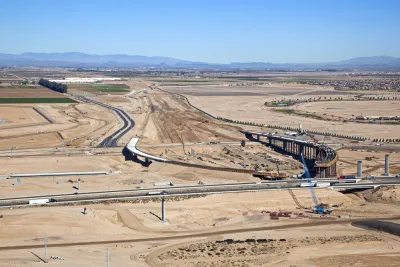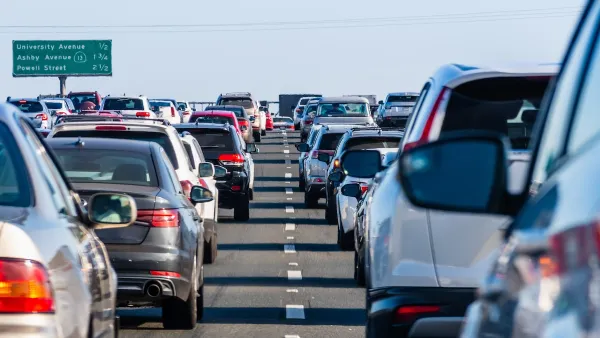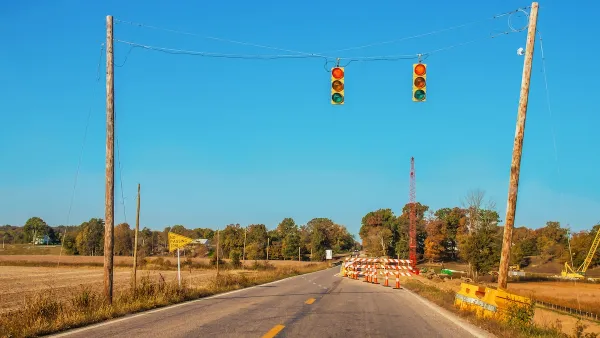Billions in federal infrastructure funding slated to go to states with few strings attached could fund roadway construction and widening projects that will raise greenhouse gas emissions and worsen climate change.

As the Biden administration prepares to distribute billions in infrastructure funding to state and local agencies, Brad Plumer writes, some experts caution that the funds could inadvertently worsen climate change by supporting road widening and construction projects.
"The new $1 trillion infrastructure law invests billions in climate-friendly programs like electric car chargers and public transit. But it also gives states $273 billion for highways over five years, with few strings attached. One analysis from the Georgetown Climate Center found that this money could significantly increase emissions if states keep adding highway lanes."
Increasingly, experts warn that if states want to slash planet-warming emissions from cars and trucks, it won’t be enough to sell more electric vehicles. They’ll also have to encourage people to drive less. In a nation built around the automobile, that’s not easy.
Kevin DeGood, director of infrastructure policy at the Center for American Progress, calls the plans for roadway expansion being proposed by many states "a major blind spot for politicians who say they care about climate change." Environmentalists point to the well-documented phenomenon of induced demand: when roads get bigger, more people choose to drive on them, and congestion quickly returns to the same levels as before.
While the Federal Highway Administration has issued 'guidance' that urges states to focus on repairs and maintenance before building new or expanded roads, as we noted earlier this week, some top Republican lawmakers encouraged governors to ignore the FHWA's recommendations.
FULL STORY: How Billions in Infrastructure Funding Could Worsen Global Warming

Analysis: Cybertruck Fatality Rate Far Exceeds That of Ford Pinto
The Tesla Cybertruck was recalled seven times last year.

National Parks Layoffs Will Cause Communities to Lose Billions
Thousands of essential park workers were laid off this week, just before the busy spring break season.

Retro-silient?: America’s First “Eco-burb,” The Woodlands Turns 50
A master-planned community north of Houston offers lessons on green infrastructure and resilient design, but falls short of its founder’s lofty affordability and walkability goals.

Test News Post 1
This is a summary

Analysis: Cybertruck Fatality Rate Far Exceeds That of Ford Pinto
The Tesla Cybertruck was recalled seven times last year.

Test News Headline 46
Test for the image on the front page.
Urban Design for Planners 1: Software Tools
This six-course series explores essential urban design concepts using open source software and equips planners with the tools they need to participate fully in the urban design process.
Planning for Universal Design
Learn the tools for implementing Universal Design in planning regulations.
EMC Planning Group, Inc.
Planetizen
Planetizen
Mpact (formerly Rail~Volution)
Great Falls Development Authority, Inc.
HUDs Office of Policy Development and Research
NYU Wagner Graduate School of Public Service




























